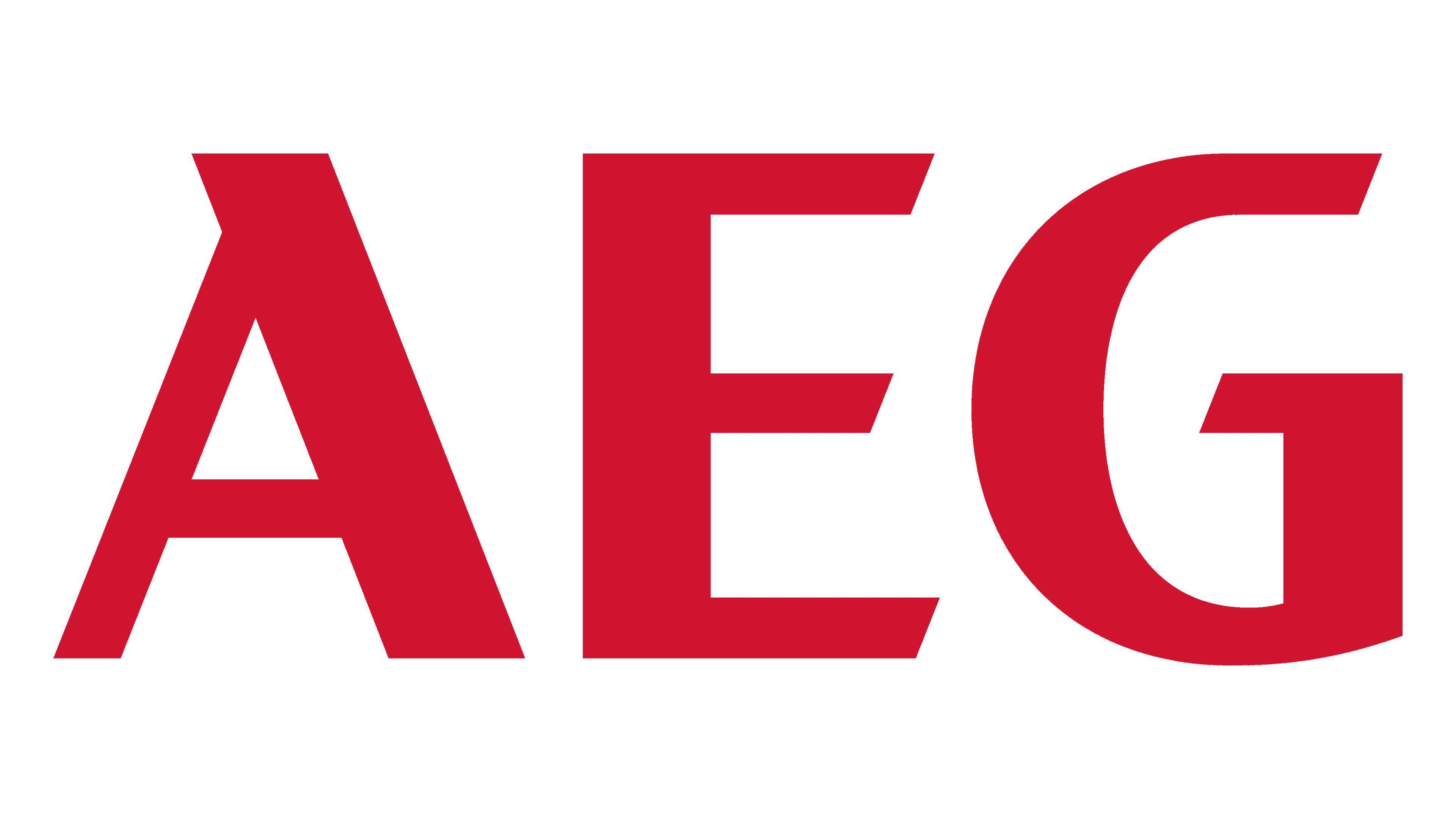AEG Logo
AEG, a pioneer in the field of electrical engineering, stands as a testament to innovation and quality. Emil Rathenau acquired the rights to Edison’s patents in Germany and established the company. The foundation took place in Berlin, aiming to revolutionize the electrical industry. AEG committed to bringing electric light and power to homes and factories, setting new standards in electrical technology. This initiative not only illuminated spaces but also powered the machinery, marking a new era in industrial and domestic efficiency.
Meaning and history
AEG was founded in 1883, initially embracing Thomas Edison’s groundbreaking electrical patents. Over the years, the company underwent significant transformations, expanding its portfolio beyond lighting. In 1887, AEG began to diversify, venturing into the production of electrical equipment. By 1907, Peter Behrens, a notable architect and designer, was appointed as the artistic consultant, introducing a unified design ethos. This era marked AEG’s commitment to not only function but also form, influencing the future of product design. AEG’s journey reflects a blend of technological advancement and aesthetic innovation, a legacy that continues to influence the electrical and electronics industry.
What is AEG?
AEG represents a legacy of electrical innovation and quality. Known for its pioneering role in the electrical industry, it has evolved from lighting to a broad range of electrical appliances. AEG symbolizes the integration of form and function, setting standards in both technology and design.
1896
The logo in question unfolds in a monochromatic dance of ornate, swirling elements, with lines that play between thickness and delicacy. Baroque in style, it presents letters that intertwine elegantly, almost musical in their form. At its core, an ‘A’ stands, adorned by a crown-like accent, hinting at regality. The ‘E’ and ‘G’ embrace the central character, all crafted with a flourish that speaks of a bygone era’s craftsmanship. It’s a symphony of curves and swirls, a visual representation of heritage and artistry.
1900 – 1907
This logo presents a stark contrast to its predecessor, embracing minimalism and modernism. The ornate details have vanished, leaving behind bold, fluid lines forming the letters ‘AEG’. Each character flows into the next with an organic ease. The ‘A’ and ‘G’ arch with a graceful strength, while the ‘E’ nestles comfortably between them. This design epitomizes the Bauhaus belief in the marriage of art and industrial function. It’s a visual leap into the future, capturing the essence of simplicity and functionality. The logo speaks to a company moving forward, aligning its identity with the modern age.
1907 – 1908
In this iteration, the AEG logo takes a further step into abstraction. The ‘A’, ‘E’ and ‘G’ are now seamlessly connected, symbolizing unity and continuity. The letters sport a sleeker, more stylized design, reflecting a modern aesthetic. This design embraces a cleaner, more avant-garde appearance while maintaining a strong visual impact. The overlapping of the letters suggests connectivity and a forward-thinking approach, a visual cue to innovation and design synergy.
1908
The evolution of the AEG logo reintroduces the full set of initials within a geometric haven. Here, ‘A,’ ‘E,’ and ‘G’ stand equidistant, encased in a hexagon that doubles as a nod to engineering precision. The typeface is unembellished, each letter a paragon of sans-serif simplicity. This design conveys balance and stability, with the hexagonal border offering a sense of protection and structure. It’s a deliberate shift towards the practical and the straightforward, mirroring the era’s design trends towards functionalism. The interplay of straight lines and angles suggests reliability and a solid foundation, resonating with the industrial strength of the brand.
1908 – 1912
The logo transitions into a circle, a symbol of wholeness and unity. Inside, ‘aeg’ is written in lowercase, each letter fluid and interconnected, suggesting harmony and approachability. The font is curvy and organic, a stark departure from the previous logo’s angular precision. This design speaks to the brand’s adaptability and friendliness, projecting a more personable and accessible image. Encircling the text, the circle adds a universal completeness, hinting at the brand’s global presence and its cyclical nature of innovation. It’s a softer, more welcoming emblem, evoking a sense of community and continuity.
1912 – 1985
Gone is the circle, and back are the capitals – ‘AEG’ returns with authority. The letters now reside within a rectangular frame, stark and assertive. This design speaks of solidity and permanence, with each character standing tall and unyielding. The typeface itself is bold and straightforward, reflective of an industrial ethos. The inclusion of a bounding box suggests a window, possibly indicating transparency and openness. This visual progression hints at a brand that values strength and clarity, projecting confidence and dependability in its field.
1985 – 2016
Color bursts forth – a vibrant red replaces the previous monochrome. ‘AEG’ stands boldly, the color evoking energy and passion. The letters, substantial and grounded, suggest a robust and dynamic presence. Their form remains uncluttered, yet the color infuses new life, signaling a brand both established and modern. This logo departs from the restrained confines of its black and white predecessor, embracing visibility and impact. The red is a declaration of confidence, a brand revitalized and ready to be noticed.
2016 – Today
The font has undergone a slight transformation, refining the character shapes for a more streamlined appearance. The boldness is consistent, yet the edges appear sharper, and the letterforms more uniform, conveying a modernized touch. This typographic tweak suggests a brand evolution, focusing on precision and a contemporary edge. The use of red remains prominent, maintaining the logo’s energetic impact.



















